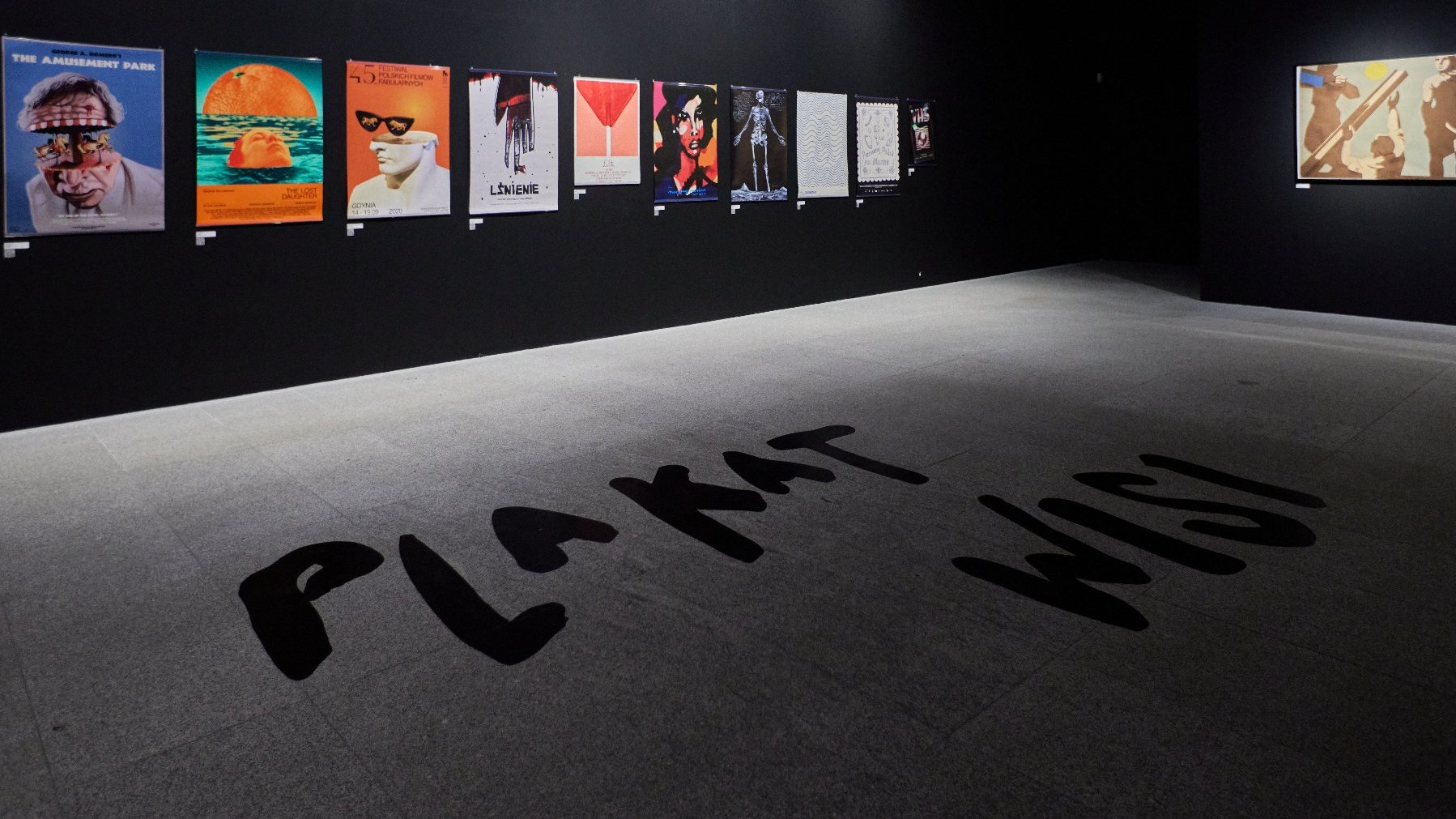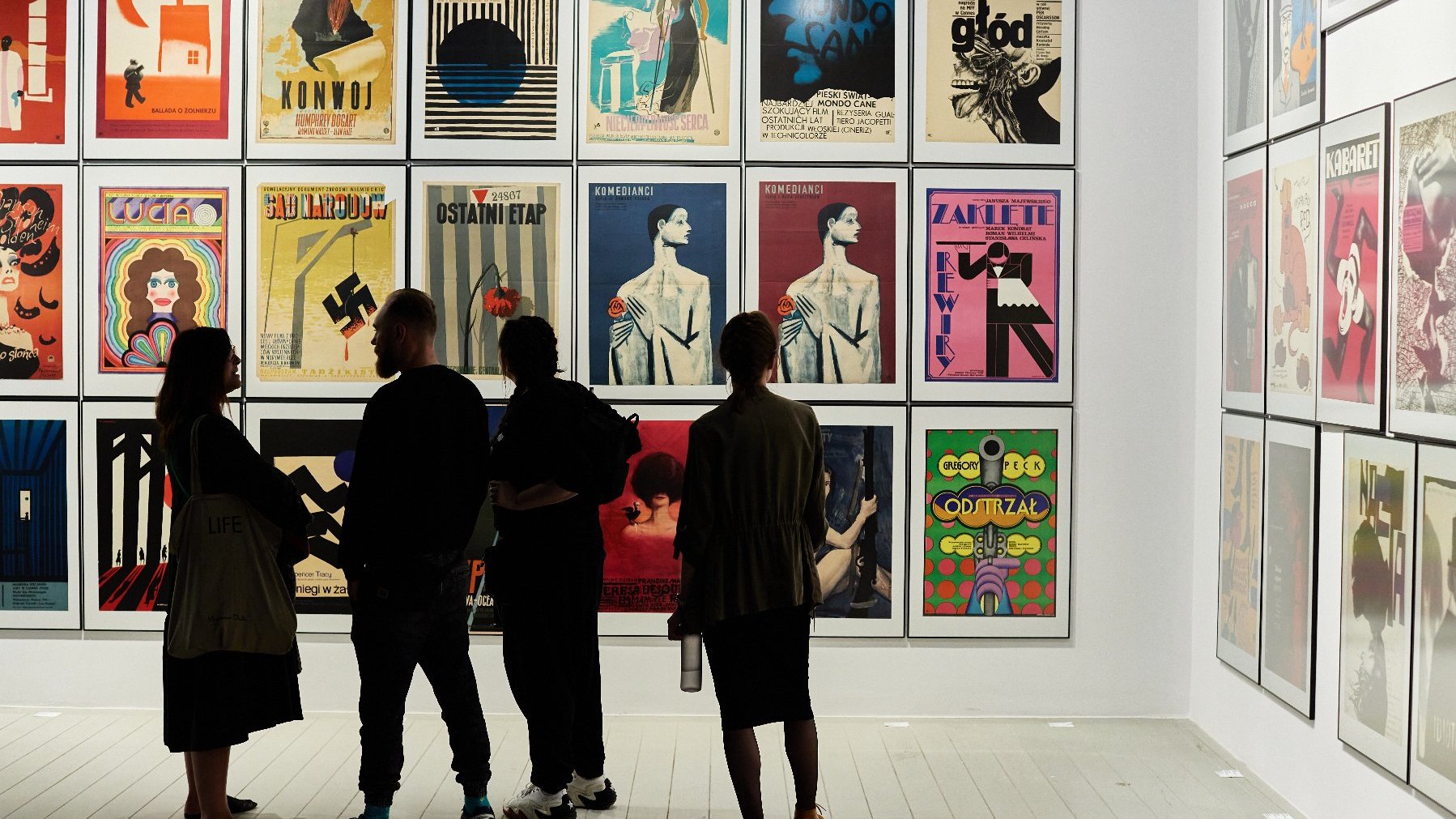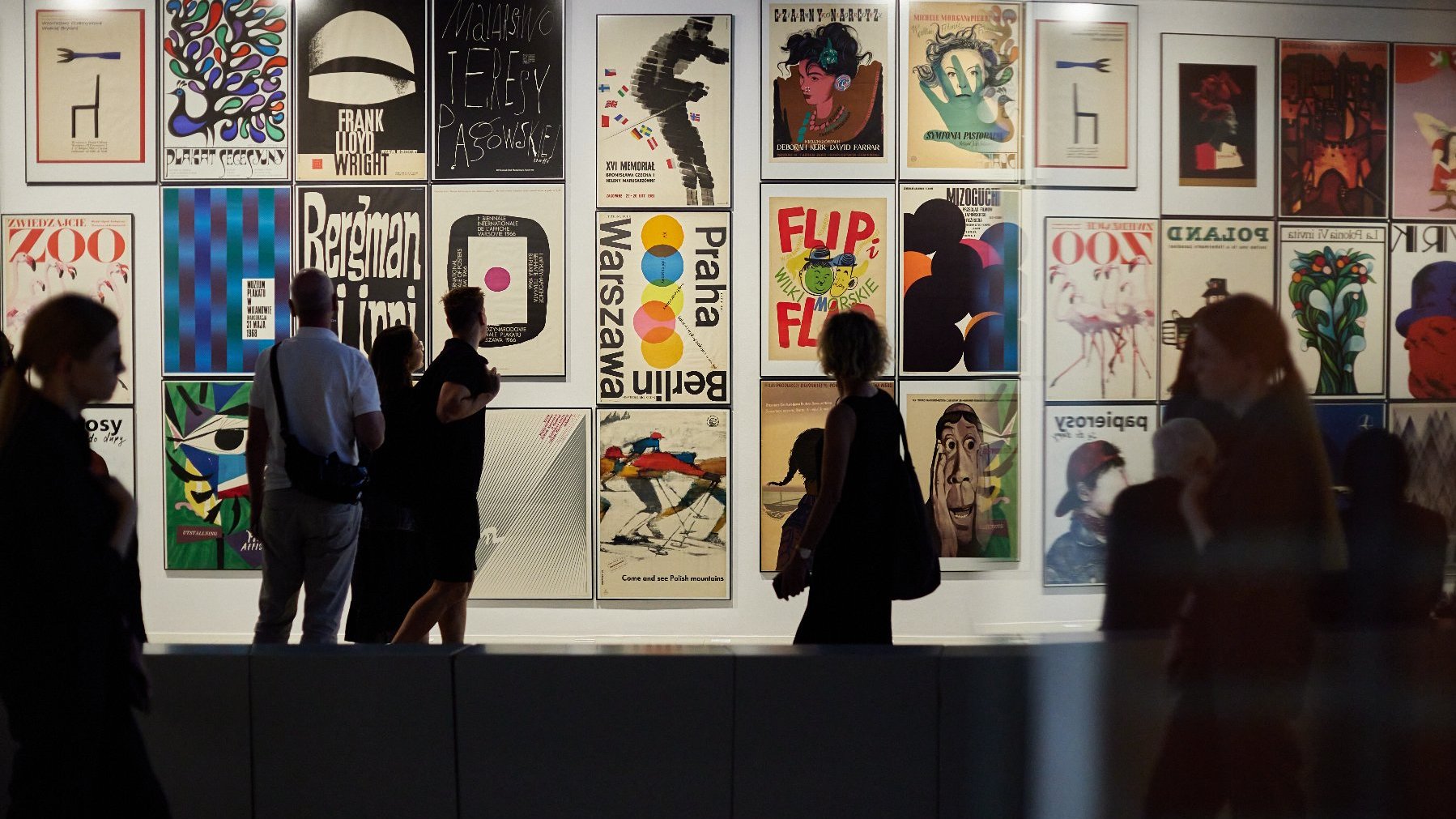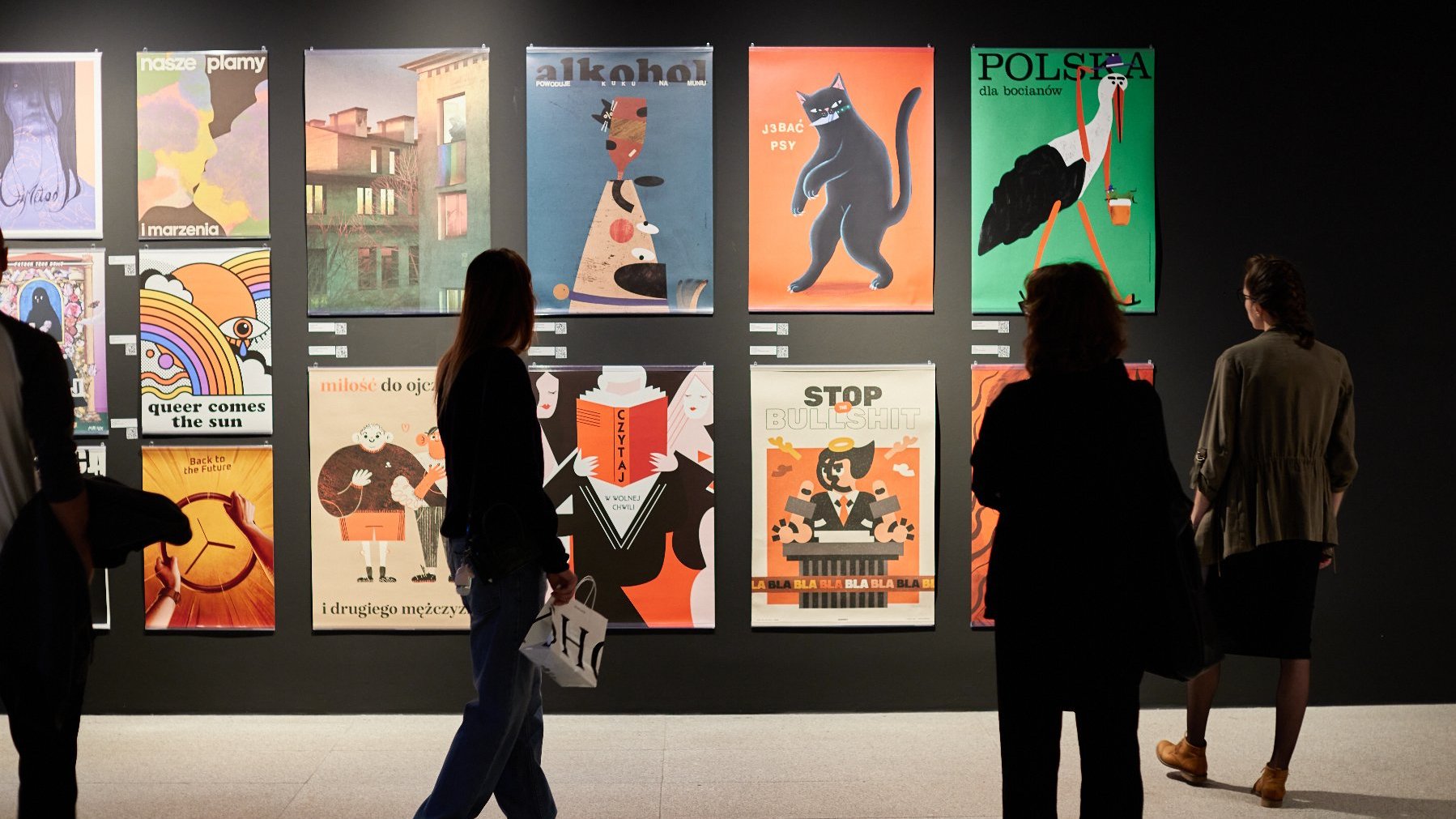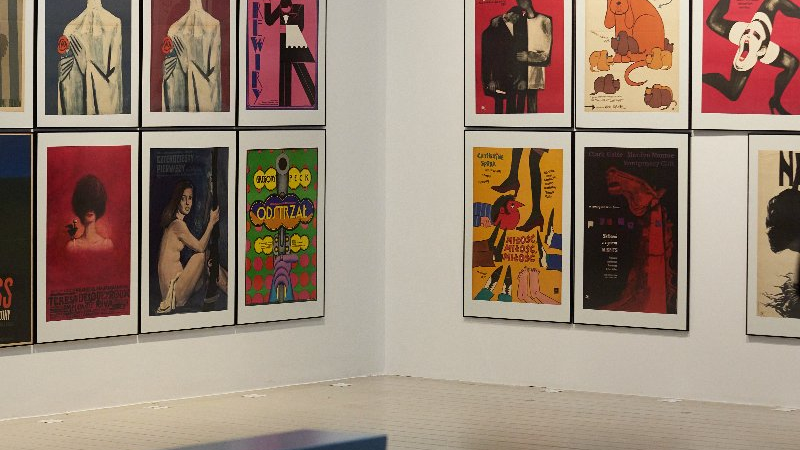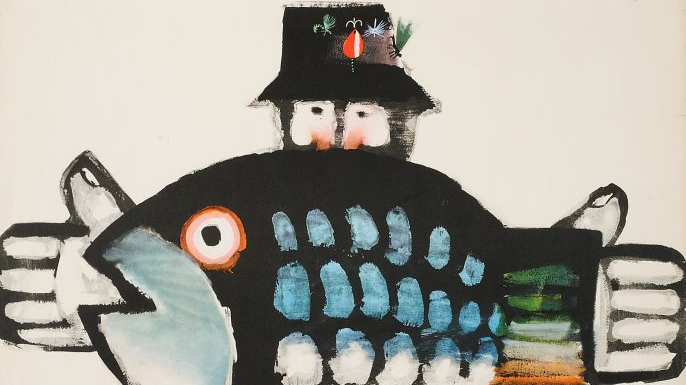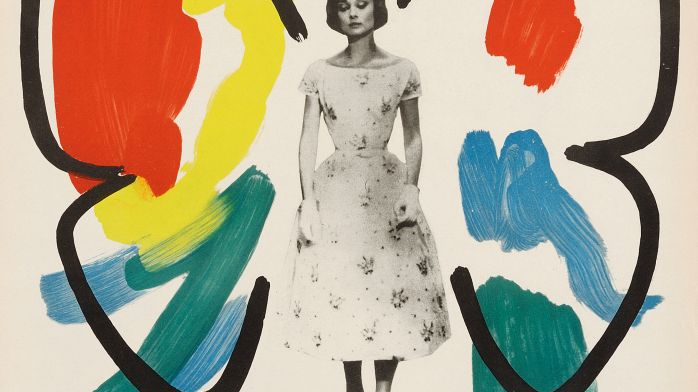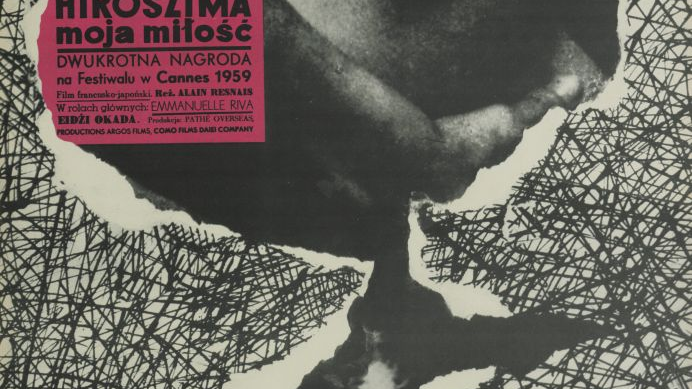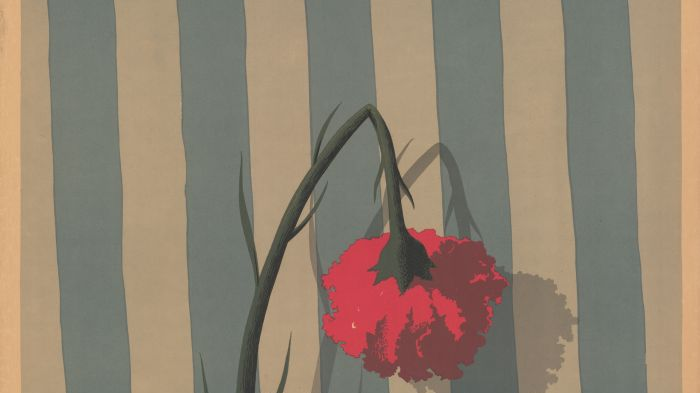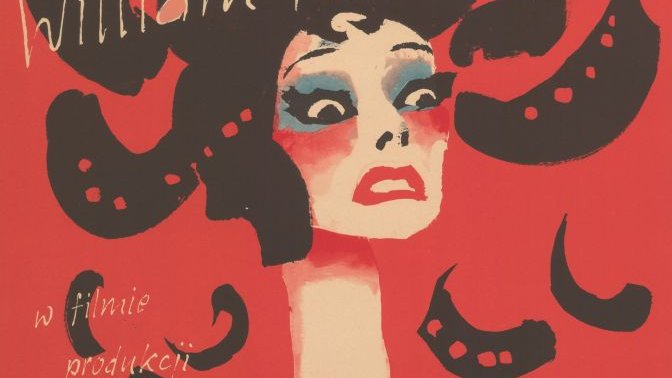Who doesn't like posters?
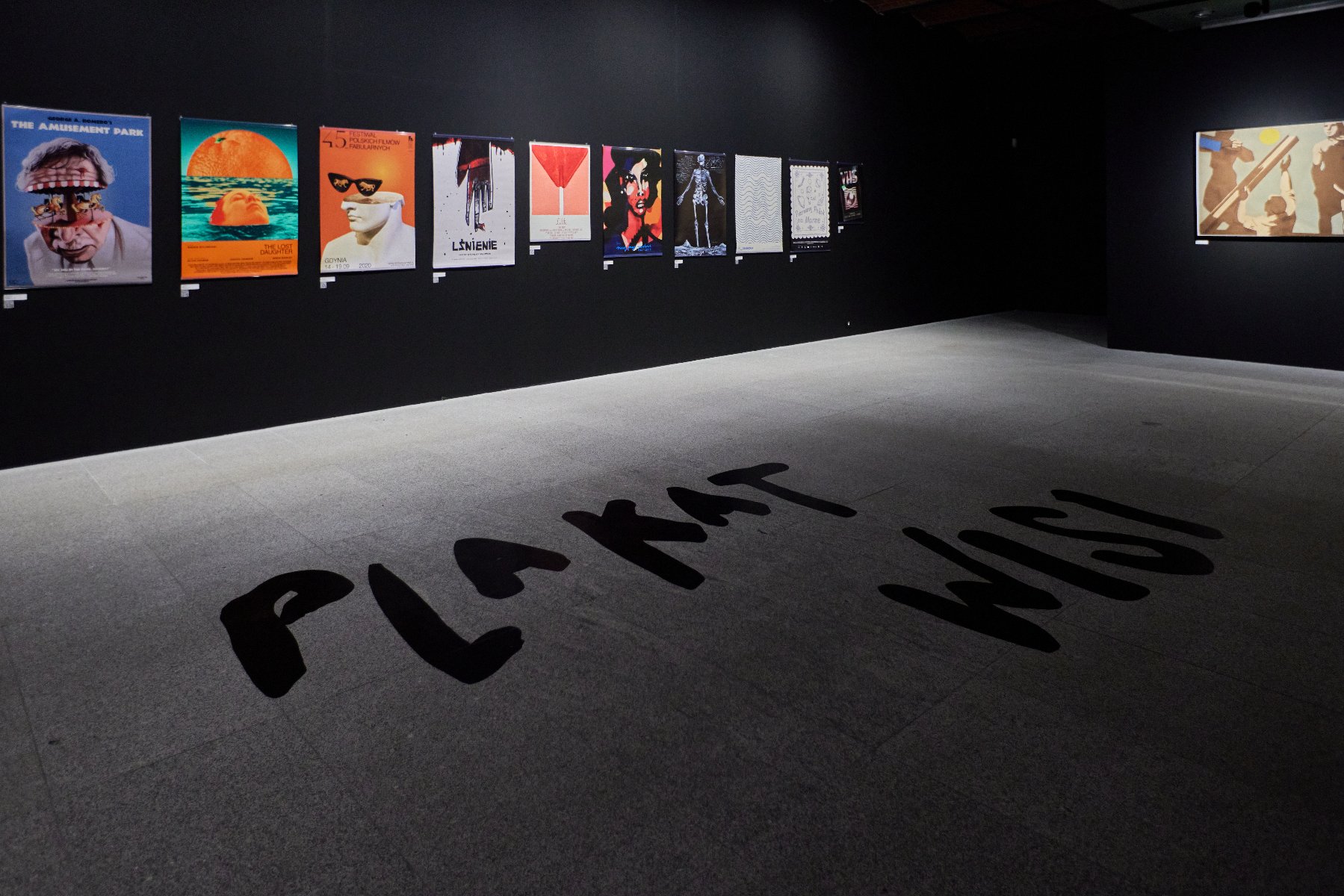
Can anyone dislike the poster as a form of art? This very question immediately crossed my mind as I entered the display, which extends over the gallery's ground and two upper floors. The question is almost rhetorical as while you may be unsure about liking or even downright hate a particular piece, the whole genre of poster is an unquestionably powerful form of expression that boasts scores of loyal fans not only among people familiar with its history, the particular works of the Polish School of Poster or art in general, but also among "the regular folks" who like to feast their eyes on an interesting image. I don't think that many people are blind to the allure of poster art, which remains in close touch with everyday life.
As it alludes to events around us, the artistic poster captures bits of "our" world. And yet, it also successfully claims the status of a separate distinctive entity with a life of its own. Not without reason, the poster was valued in communist Poland for brightening up the gloomy reality of a country scrambling to recover from wartime devastation. It has always been clear that, unlike paintings, posters are not made for galleries and museums and should rather be viewed in plain street settings. Posters were thus relieved of the burden of having to live up to the standard of an elite masterpiece reserved for the select. They are also distanced from intrusive, mass-made advertising even if they have a great deal in common with visual promotion. Owing to the specific way they disseminate information and the fact they encourage people to act in specific ways, posters are more akin to intrusive political propaganda. The posters that promote motion pictures, performances, and any other cultural events balance precariously on the borderline between high art and entertainment.
The Posters Are Up display inspires reflection. The presentation cannot fail or turn people away. The selected posters are worthy specimens of this form of creativity. Just look at the names. As mentioned earlier, the posters are on view on three floors. Although they viewers just as well start viewing at the top and only then descend to the first and ground floor, most of them, as soon as they purchase their ticket, are likely to head straight for the ground floor which holds recent posters by contemporary artists. Many of them are well known to the fans of attractive design. Some rely on the spot, others resort to the line. Some saturate their work with colour, others use colour more sparingly.
The thematic spectrum is broad, ranging from commentaries on current domestic and world events to references to films, plays, and festivals. All of the issues and threads intertwine. And then there is one exception: Wojciech Fangor's Workers dating back to 1955. What is it doing here? It serves as a point of reference of sorts being the "older brother" piece placed there to put "whippersnappers" in their place and remind them they weren't there first.
Moving on. As the signs say, the first floor exhibition is devoted to propaganda and solidarity, whether in small case or in capitals. The left side of the room displays post-war propaganda pieces. They stigmatise the West, glorify the Soviet Union, and promote unity and work as a way to lift the country from the ruin in which the war of 1939-1945 left it. Interestingly, we now perceive them differently, not as much as a tool of indoctrination, but rather as a visually intriguing relic of the past.
The history lesson continues across the room, where posters on the Solidarity movement and the successive commemorations of anniversaries of the Poznań June 1956 protests are featured. Obviously, this is a historical counterbalance meant to offset posters that promulgate communist ideals. No other part of the exhibition makes such stark comparisons. "Solidarity" rose on the back of public exasperation with the rules of the post-war system. This contrast is evident in the visual sphere. Many of the posters resemble hastily made placards put up on city streets.
The third floor holds a mishmash of numerous many-hued and highly diverse posters. This riot of colour packs quite a punch. Viewers are free to move their gaze from image to image and admire the sheer creativity of their authors. Most of the works here date back to the 1960s and "70s. They bill hit shows, movies, theatre plays and many other "attractions" meant to be brought to the attention of audiences.
Even if a bit chaotic, the colour combinations are a pleasure to see. The display's layout manages to capture that of the street with all of its freedom and diversity. The arrangement also allows one to see Polish posters as a massive universal creation. And the artists who have made them over the years, even if separated by decades, remain a tightly-knit group whose members saw the poster as a chance for unbridled expression that it essentially is.
Justyna Żarczyńska
translation: Krzysztof Kotkowski
- Posters Are Up exhibition (Plakat wisi exhibition)
- Old Brewery, Galeria na Dziedzińcu (Courtyard Gallery)
- Open until 28 February 2023
© Wydawnictwo Miejskie Posnania 2022
See more

Waltzes, jazz songs and carols

From One Celebration to Another

Christmas Markets and Fairs with Attractions

